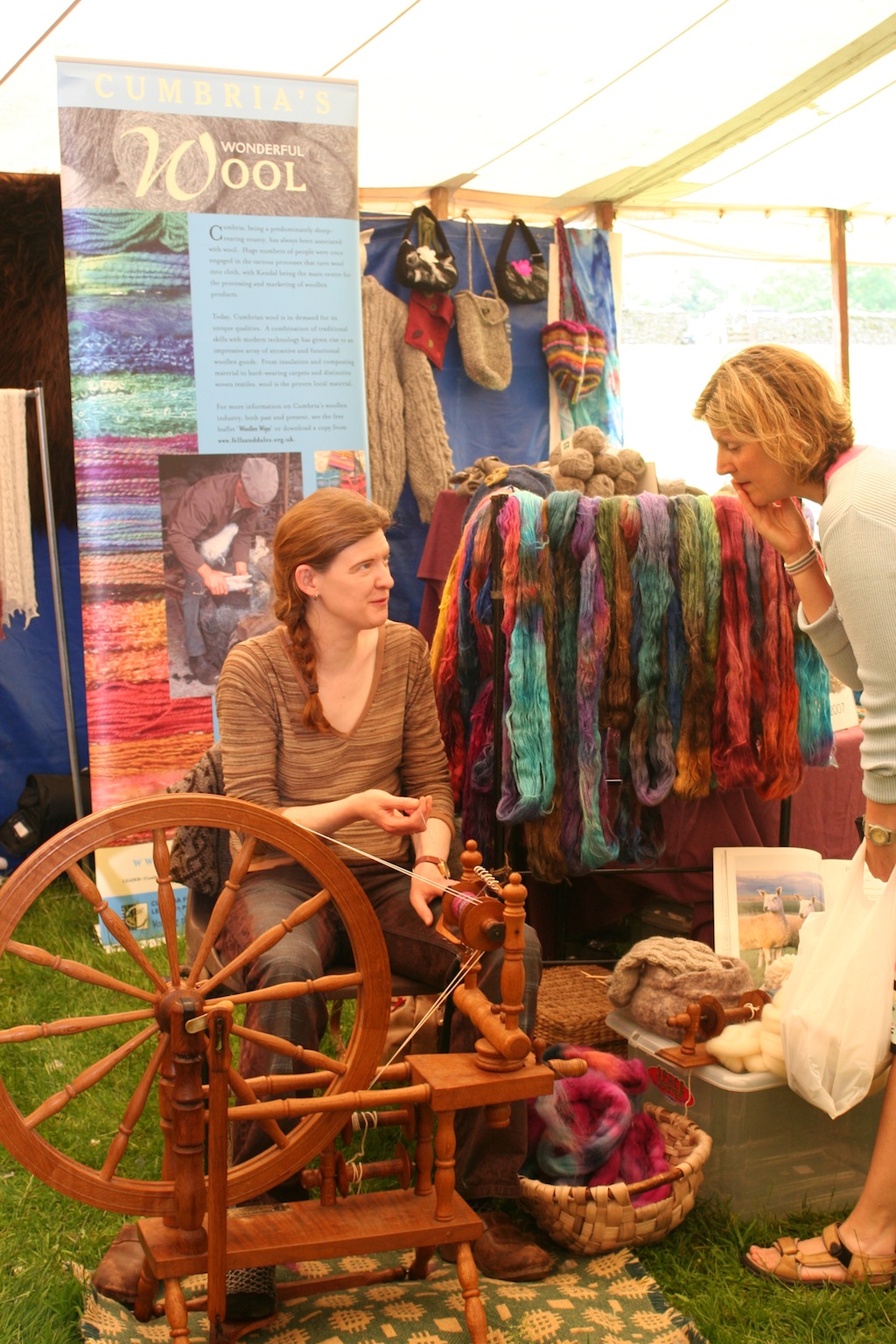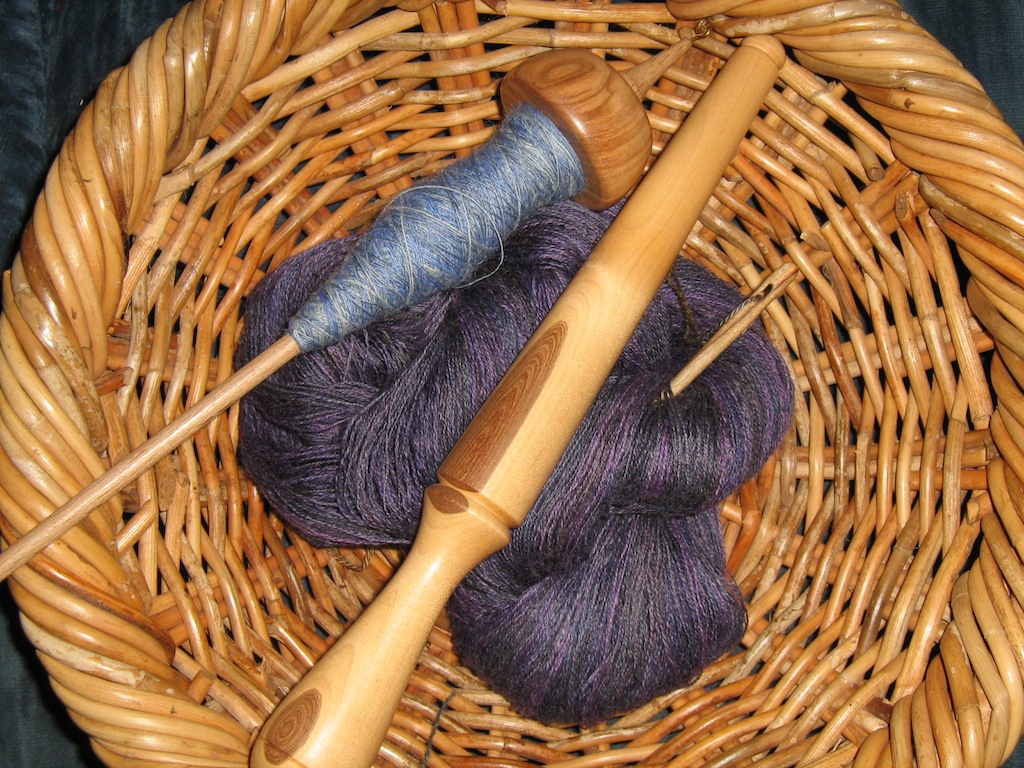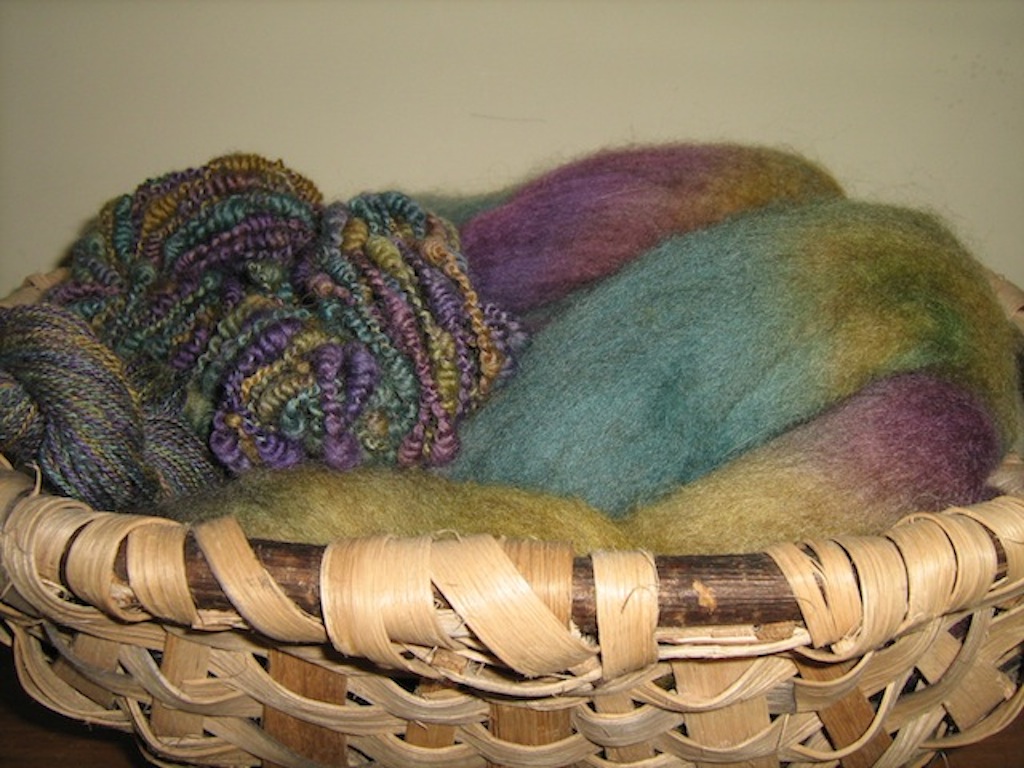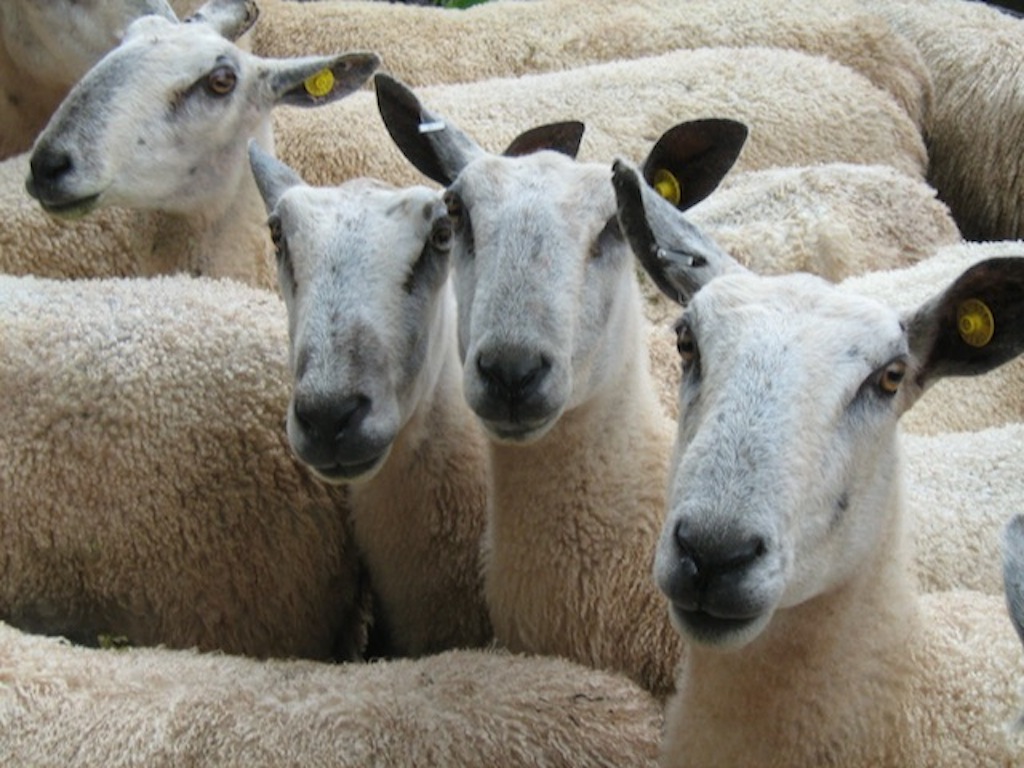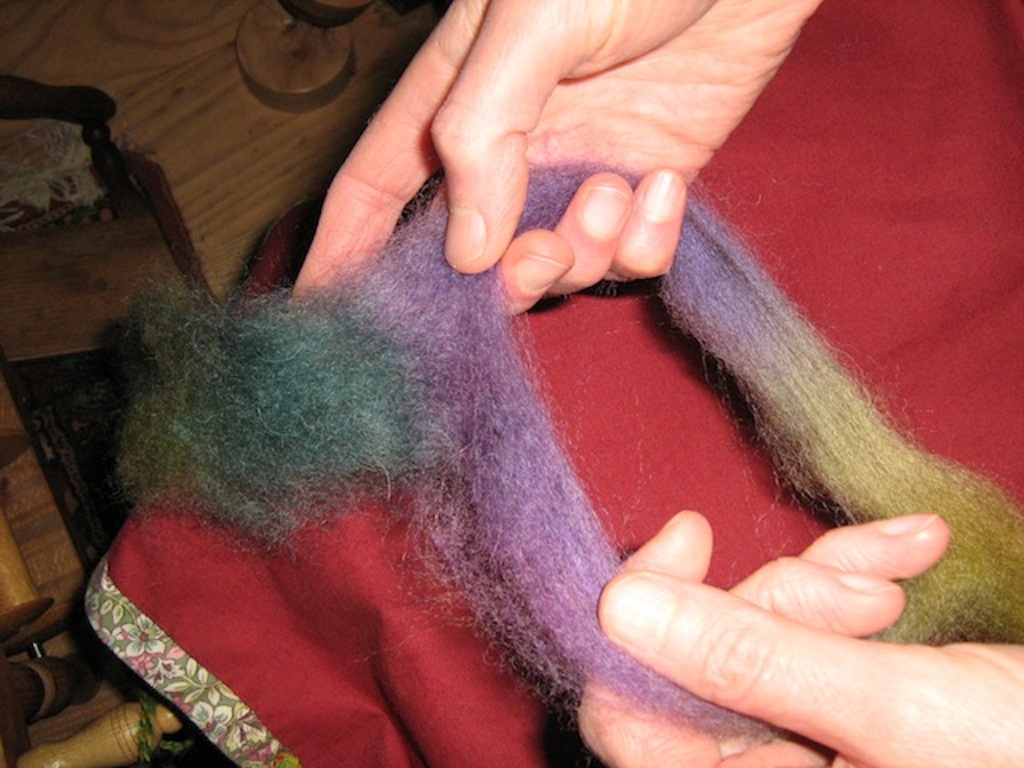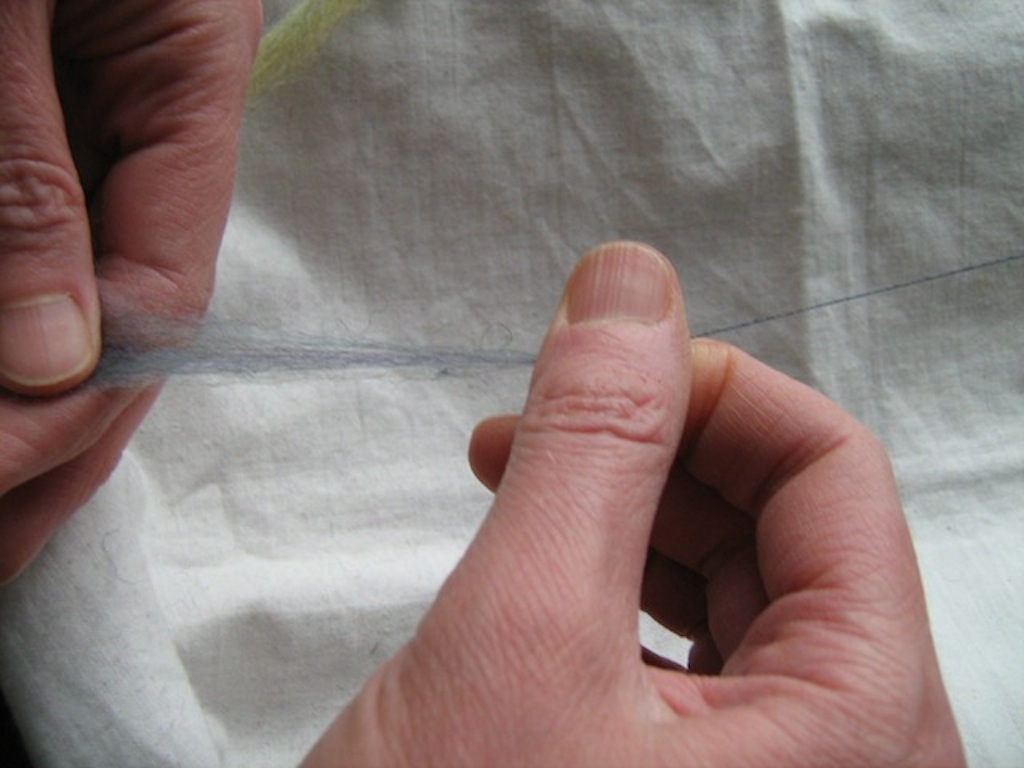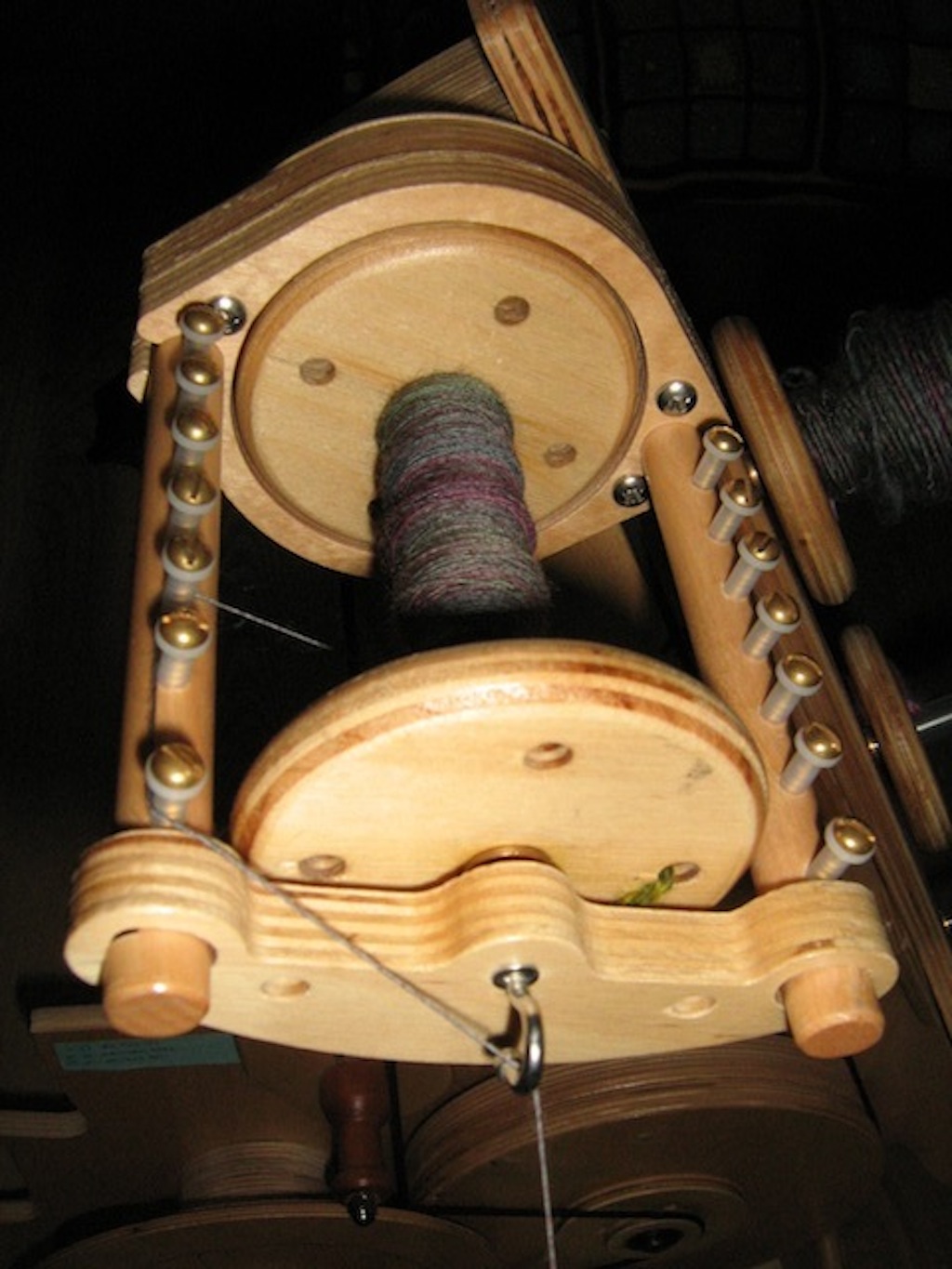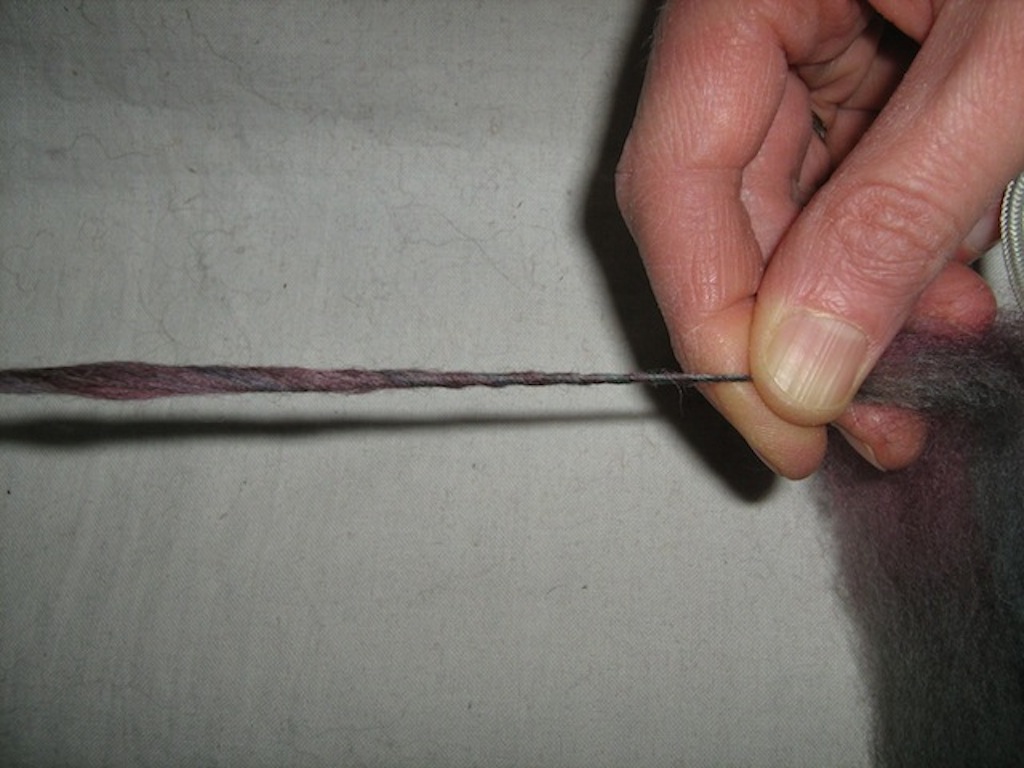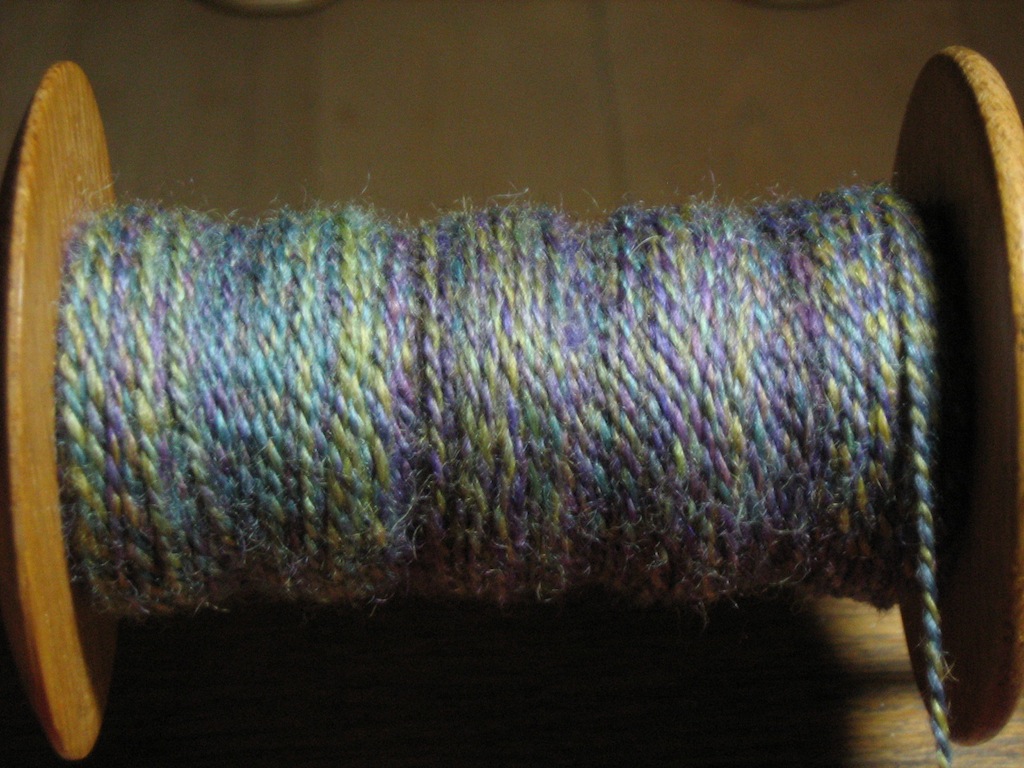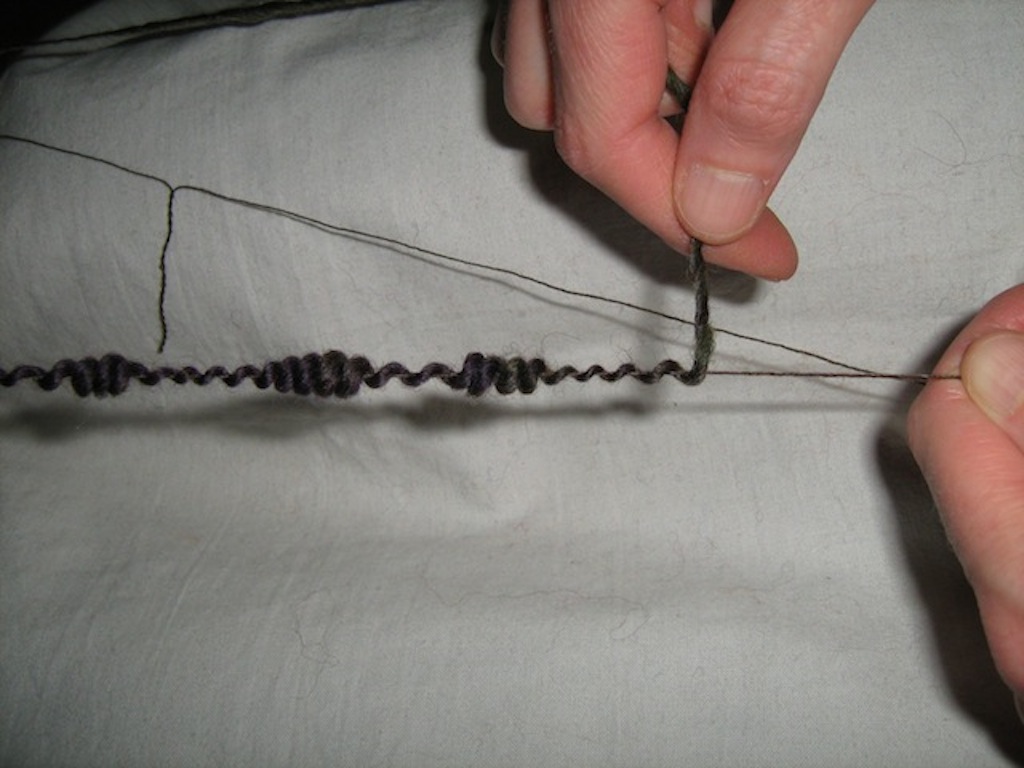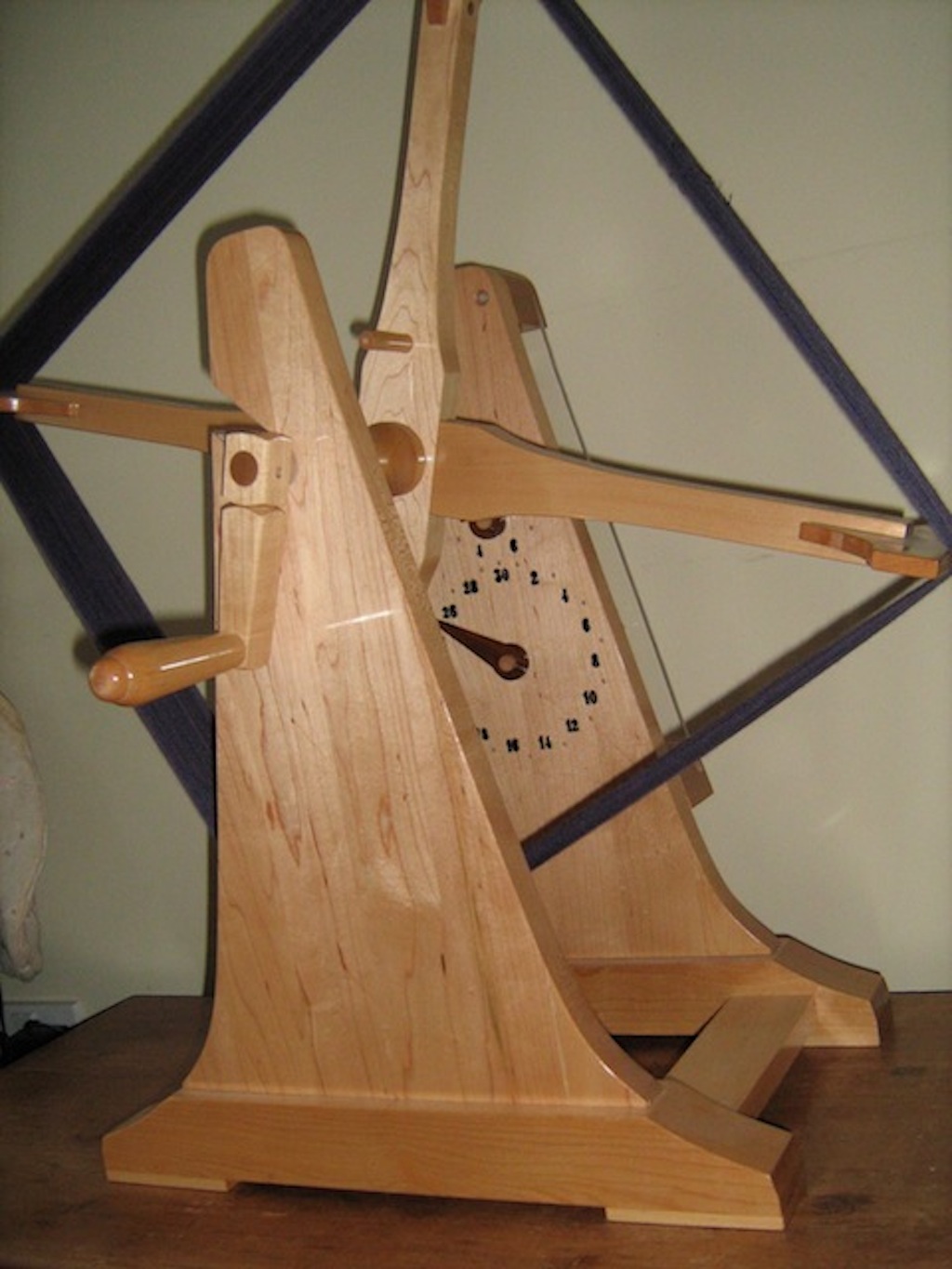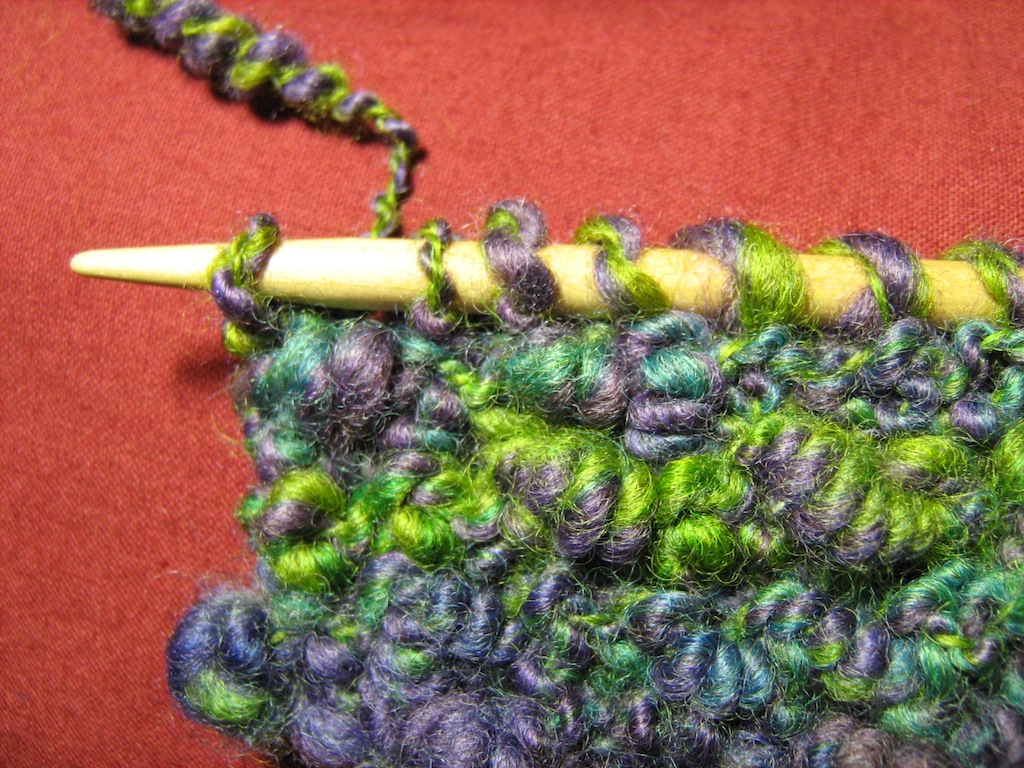Cecilia Hewett is a member of The Woolclip whom we heard a bit about in the post we recently published featuring WOOLFEST. A Cumbrian co-operative of extraordinary women all working with wool in one way or another, members of The Wool Clip are especially connected to the distinctive landscape in which they live through their work with textiles. This connection manifests in everything from a practical dependence on local sheep for WOOL through to drawing inspiration from the colours and history of local places for textile projects. Many of Cecilia’s gorgeous handspun yarns are both from the landscape and about the landscape, and she has very kindly supplied WOVEMBER with wonderful answers to our Q&A, exploring how she expresses the place where she lives in the yarns that she creates. We shall leak the posts across this Sunday afternoon and evening, and we hope you shall enjoy this hand spinning extravaganza! Cecilia has also kindly offered to supply WOVEMBER with some of the handspun produced in the course of writing this piece, so a small sample of her distinctive handmade yarns will be added to our ever expanding prize pot!
1. You are a professional hand spinner of yarns; what is your favourite thing about this being your job, and what is your least favourite thing about this being your job?
My favourite thing is that I get to play with beautiful fleece all day! But equally important is the opportunity I have to share my love of hand-spinning with others. I’m lucky enough to belong to an amazing co-operative – The Wool Clip. There are 15 of us, all working in different aspects of wool and we run a shop together in Caldbeck, Cumbria, which is full of wool from our own sheep flocks and the gorgeous things which our members make with wool. We often demonstrate our wool crafts in the shop and at local events and doing this gives me the chance to meet so many people who want to learn about hand-spinning.
It really is the best thing when someone is inspired to have a go at spinning and finds it’s not so hard after all!
My least favourite thing is encountering people who think it’s all a total waste of time. I’ve found that the best weapons to combat this are education and enthusiasm. Even the most wool-resistant husband who finds himself dragged under protest into our shop by a woolly wife during the family holiday can’t help but be fascinated by the spinning wheel and spindles in action!
2. Do you think the difference between a 100g skein of millspun yarn vs. a 100g of handspun yarn is widely appreciated, and what does the difference mean to you?
It is, I suppose, the price tag which usually alerts people to the fact there’s a difference! Often when people have seen it being made, they begin to appreciate the amount of work which goes into making the yarn and realise what the difference is. Recently, there certainly seems to be a growing interest in hand spun yarn, just as people are also more appreciative of the beautiful mill-spun yarns which are available now and the diversity of sheep breeds represented in them. I make a variety of styles of yarn, catering for my different customers, and recently it seems that the yarn in greatest demand is that at the higher end of the range, which suggests that these customers at least are well aware of the difference. Most of the yarn I sell is made with a spinning wheel. However, occasionally I decide to sell a special hank which has been spun on a spindle, such as this one…
…which was produced using only the tools in the basket. It is quite a fine lace yarn – there is half a kilometre in the 50 grams and it took many hours to spin. This sort of yarn is priced according to the amount of work it took to produce, but – always to my utter surprise – it sells very quickly, despite the fact that we also offer a beautifully-dyed and very popular millspun lace yarn in our shop which is significantly cheaper than its handspun equivalent.
For me, the real difference is that, because each hank has taken time to produce, it has had time to accumulate meanings beyond the physical qualities of the yarn itself: the places where it was spun, what I was thinking about or listening to, who I was with… I spin hundreds of hanks a year and many of these are repeats in terms of colour and style, but each hank acquires its own story as it is spun, which I keep to myself, unless it’s truly exciting. As I was discussing my yarn with a customer recently, I realised that I was talking about the different hanks as if they were pets!
3. Would you mind giving us a tour of your most recent 100% WOOL skein of handspun, starting with what the fibre is, how you have arranged the fibres in your spinning, how you have spun and plied the yarn and what it might be suitable for making?
There are many different methods of spinning which produce different types of yarn. Here I will demonstrate how I spun the yarn shown in this beautiful local oak swill made by Owen Jones from dyed fleece like that in the basket with it.
I will concentrate particularly on the coily hank of yarn, since this is the type of yarn I am most often asked about. Because fancy yarns are so often only available commercially in synthetic fibres, it is a good demonstration of the effects of colour and texture which can be achieved with 100% wool. For this I use a very modern wheel (made by SpinOlution of California), because it is designed to deal easily with textured yarn.
To start with, a very brief and basic run-down of how hand-spinning works, which should hopefully allow anyone unfamiliar with it to understand what is happening in the demonstration. The principle of spinning is that the turning of the wheel (or spindle) creates energy which has nothing else to do but twist fleece which has been attached to the wheel in the direction in which it is turning. My job as a handspinner is to keep the wheel or spindle turning whilst at the same time controlling the amount of twist reaching the fleece and the amount of fleece which is twisted. The skill is in maintaining this control in order to make exactly the yarn wanted. The basic difference between a wheel and a spindle is that the spinner keeps the wheel turning with the feet and the yarn is continuously wound on to a bobbin, whereas a spindle is turned by hand and then stopped so that the yarn can be wound on manually. I use both wheels and spindles in my work. Whilst a wheel is obviously faster, a spindle is beautifully portable and allows yarn to be made in odd moments or places when using a wheel would be impossible, which actually makes it a most efficient tool.
The fleece used in this yarn is from Blue-faced Leicester sheep and is my favourite fleece to use. I’m lucky enough to live next door to a prize-winning flock who graze on my land. Here they are!
The role of this flock is to breed tups to be bred with Swaledale ewes to produce the North of England Mule. Mule farmers’ tup flocks are extremely important to them and they usually live in small flocks near the farmhouse and spend the worst of the winter weather in a cosy farmyard barn eating the best hay. This makes them ever so friendly and whenever I’m passing them, the sheep always come up to have their noses scratched and watch any spindle-spinning which might be going on with their fleece. As well as fleece from these sheep, I also love to use prepared combed tops which have already been dyed, in order to support Britain’s flourishing community of independent dyers and also to give myself more time for spinning (since preparing and dyeing fleece takes time too). The fibre I used for this yarn was dyed by Freyalyn Close-Hainsworth, one of Britain’s leading dye artists.
The fleece has already been combed into a long strip and then dyed. When I get it, the first thing I do is decide how the colours are going to work in the yarn and prepare the strip accordingly. Sometimes I card or comb it more to blend the colours, but on this occasion I spin it as it is, which will create an overall effect of a slightly mottled stripe. Firstly, the combed top is carefully broken lengthways into more strips – how many depends on how frequent I want the colour changes to be in the yarn: the finer the strip, the shorter each colour run. When I’m spinning very multi-coloured yarn, it can all get quite complicated, making sure the sequence of colour changes happen in order and the right colours meet each other in the plying and it’s best organised before starting to spin.
When this is done, I take one of the strips and use it to spin the core. This is a very fine thread around which a much thicker, lumpy thread will be wrapped to make the coily yarn.
The core needs to be very strong indeed so that it doesn’t break either during the later plying or, worse, when the yarn is finished. For this, fast spinning is needed to provide enough twist to give the very fine yarn enough strength. In the picture, my right thumb and finger are pinching the twist at the point where the yarn which the wheel has already spun meets the fibres, in order to hold that twist until I’m happy that the fibres between my hands are at the right thickness. Then I move my right hand towards the left, allowing the twist in whilst sliding down the fibres and letting the newly-made yarn through the pinch to be wound onto the wheel’s bobbin. Here is a picture of yarn winding on to a bobbin. From my hand it goes round the hook at the front, then round the knobs and on to the bobbin:
This part of the yarn is something which it is often more productive to do on a spindle, when life is busy and I have to be out and about too much to sit at a wheel.
When enough fine yarn has been spun for the core, I spin the rest of the fiber as a much thicker yarn which will be used to wrap around it. This is the opposite of the fast, fine core spinning and is done slowly, since thick yarn needs very little twist to hold it together.
The yarn is spun alternately thin and thick – the thick places are called slubs. I use a similar method as before, smoothing down the fibres as they turn into yarn, although less so on the slubs and more on the thin places between them. This is because Blue-faced Leicester wool has a beautiful natural lustre – a particular quality of all long-wool fleece – which can be maintained in the yarn by smoothing the fibres as they are spun parallel to each other. The magic of Blue-faced Leicester, however, is that it is also very soft and can be made woolly, so, by careful spinning, one can create a yarn which is both silky and woolly at the same time – a texture I love!
Then I let these yarns rest for a while, since the fine core in particular is full of zinging energy and can very easily get into a tangle with itself if immediately used, so I give it some time to calm down. While this is happening, I spin two bobbins for a smooth yarn in the same colours, using my Timbertop wheel (made in Leicestershire by James Williamson in 1977), in much the same way as the core yarn was spun, but somewhat thicker. These are then plied together. Most yarns are plied in some way – it means the twisting together of two (or more) yarns in the opposite direction to which they were spun, in order to give the final yarn strength and balance. Smooth yarns are made by plying together yarns of equal thickness consistently with one another and this is what I do here:
The two yarns are on their bobbins down near the base of the wheel. From there they go to my left hand which gives them tension, so they feed evenly together on to the bobbin, while my other hand controls the twist entering them. The colours blend together beautifully in the plied yarn which creates a mottled effect as a fabric.
Intermission over and it’s time to get back to the coily yarn (having explained about plying, because that’s going to be the all-important and fun thing about this yarn). What I do for this, however, is the opposite of the plying of the smooth yarn – inconsistently plying thick with thin to create texture. Here you can see the wrap curling round the core yarn:
The process happens very quickly – too much dithering and the loosely-twisted wrap starts to fall apart – but it can be shown broken down into its stages:
The fine core yarn is held under tight tension by my left hand, so that it can’t curl and twist (which is all it wants to do – see how the untensioned core yarn which hasn’t yet reached my hand has doubled back on itself at the left of the picture). Meanwhile, the thick wrap yarn is fed on to it sideways and the twist in it makes it naturally curl round the fine core:
When a slub has been curled on to the core, I quickly shove it with my thumb to make a coil before it is pulled on towards the bobbin. It is possible to anchor each coil to keep it exactly in place, but I usually leave them loose, so that they can be manipulated during knitting or weaving:
And that’s my coily yarn, just one of the many fancy yarns which can be made with 100% wool! For some really exciting wool art yarns, I recommend looking at the work of Daniela Kloppmann.
The finished yarn is then wound off the bobbin to make a hank. If there’s not too much yarn, I use a niddy noddy, like this one which was made by Joan & Clive Jones in Pontypool (who also now make Timbertop spinning wheels). During winding, I check that the yarn is all okay and how I wanted it to be. Here the smooth yarn is being wound off from the lazy kate (the bobbin holder – spinning equipment has such lovely and strange names!):
For a large hank of yarn I use this amazing winder which was made by Michael Williams of Sheffield and is a superb work of craftsmanship. It smoothly winds the wool, while counting the length of the hank – there are cogs at the back which turn the counters as the handle is turned. Here it’s busy with some other wool:
Then the hank is washed. As well as cleaning it, this also sets the twist firmly and if this isn’t done the yarn will quietly and invisibly wriggle away to itself and start to change. It is also useful to make sure that it washes well, because my customers may wish to wash the things they make with it. Then it gets whizzed in the spin dryer and hung to dry. I’m afraid to say I’m rather rough with it, because I must check that every hank is good and strong with no weak points where the fine core yarn might snap. I always hope it goes to a good home where it’s treated with care, however!
As for what it might make, I usually think of it as ideal for a textured accent on knitted garments, used with other wools. It is often sold with the smooth hand-spun yarn in the same colour scheme, but also works well with mill-spun. It is popular with embroiderers and weavers too. I love the texture when it’s knitted on its own, without any other yarn interspersed. The close-up picture shows how it’s shiny but woolly at the same time and how the coils squiggle in different directions. They can be wiggled with the thumb as the stitch is made to make sure they go where they are wanted.
The smooth yarn with its mottled colours makes beautiful fabric too and I’m always delighted to see what people make with it. My husband, Graham, used a very similar yarn in the same colour-scheme to weave the scarf on the left:
All content © Cecilia Hewett and republished here with her kind permission, do check back in a few hours time for further adventures in hand spinning yarn!
